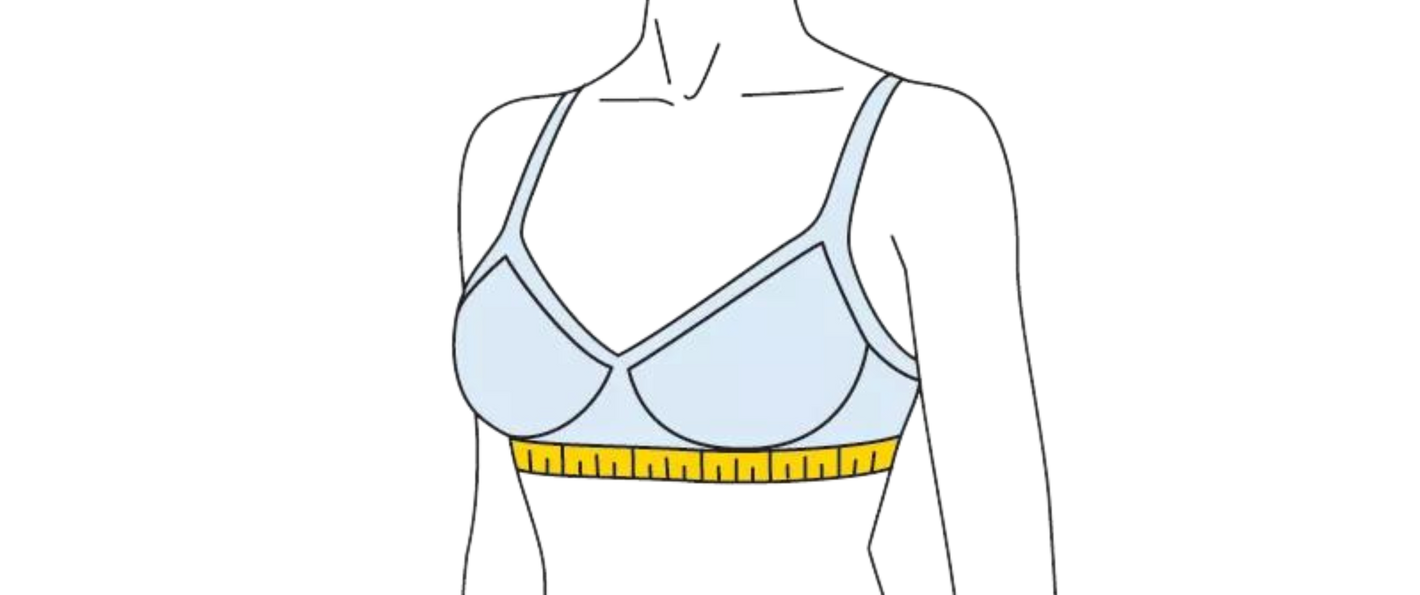What you need to get started
Equipment for measuring bra size is minimal - All you need is a tape measure and a little free time, and you'll have saved yourself a lot of bra-shopping misery. Don't have a tape measure that is soft or flexible? No worries! Try using a ribbon or string around your body instead and then measuring it flat against the tape measure. Great, let's get started!
3 Simple Steps to Find your Size!
Now that you've got all your measurements, we can put them together to make your Bra Size! Your Bra Size is made up by combining your Band Size with your Cup Size.
For example, if your measurements are Band Size = 34 and Bust Size = 35, we can find your Cup Size by taking 35-34=1, which is an A Cup. Your Bra Size is 34A!
It's important to remember that even if you have the correct measurements, some bra styles may fit a little differently and be better matched for your body shape and lifestyle. Learn more about different bra styles in our Style Guide.
See our Her-Rah! Size Conversion Charts below

How to Solve Some of the Most
Common Bra Fit Problems
Is your bra overflowing?
If you're spilling out or overflowing from your bra, either on the sides or over the cup, your cup size is too small!
The Solution: Try a cup size larger! That's it!
For example, if you're wearing a 34B and the band seems supportive and snug but you're getting the dreaded "double boob" effect over the top of the cup, try a 34C. If the issue persists, try another cup size larger until your girls are completely enveloped in the bra cup with no spillage.
You can also consider trying different styles of bras, as different cup construction works better for different breast shapes & sizes!
Is the Band of your Bra riding up in the back?
If your band is riding up in the back, it's almost always because your band size is too large! When we wear a band size that isn't snug enough, we overcompensate by tightening our straps, thinking support and lift should come from the strap.
It can take a little time to get used to the feeling of the band around your chest, but 80-90% of your support is meant to come from the band. The band of your bra should stay horizontal, or parallel to the ground, and, bonus, your straps won't hurt anymore!
The Solution: To fix, try a smaller band size until your breasts are supported mainly from the band.
As you adjust band sizes, you'll probably need to compensate cup size by going up one cup size for each band size you go down. These are referred to as 'sister sizes'.
For example, if you're wearing a 36C, go down to a 34 band size but up to a D cup size. If it's still too loose, the next size to try is a 32DD.
Are your straps hurting or constantly falling down?
Bra straps can pose big problems, whether too tight, digging in and leaving indentations that can become permanent, or slipping off your shoulders non stop. The too tight bra straps are typically due to wearing a band size that's too loose, so we compensate by shortening our straps, mistakenly thinking the bra straps should support us.
The Solution: Try a smaller band size and be sure to adjust your bra strap. If your shoulders are sloping, try bra styles with straps that are closer set or try a simple accessory like the Fashion Forms Strap-Mate.
When trying a smaller band size, remember to go up a cup size for each band size you go down, for example, a 36D would become a 34DD. It might feel snug at first but not too tight, there should be just enough room to slide 1 finger under the band. Remember, most of your bras support will come from the band!




